2017-2018 Bolt EV models feature Michelin Selfseal® tires that will immediately seal the tread when punctured up to 1/4-inch (6 mm) in diameter. The Selfseal tires also may be repaired using a one-piece patch/stem unit if the puncture is within the tread.
Designed specifically for the Bolt EV, the Michelin Selfseal tires (Fig. 5) use a unique compound and construction that offers additional stiffness — for less rolling resistance — without reducing comfort or performance levels. The special tread pattern and groove widths also minimize road noise. With the self-sealing tires, the Bolt EV is not equipped with a spare tire or changing equipment, which saves weight and improves EV battery range.
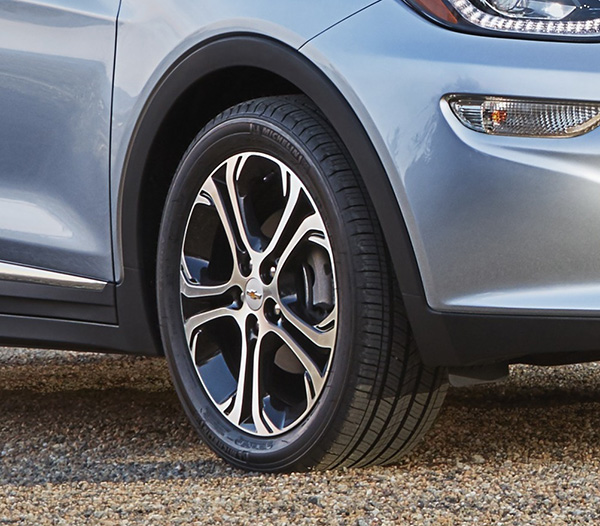 Fig. 5
Fig. 5
In some cases, if a Selfseal tire has a puncture that is larger than 1/4-inch (6 mm) in the tread area, the tire may not self-seal and a one-piece patch/stem unit may be needed to repair the tire. Follow the repair material manufacturer’s instructions.
If the tire puncture is larger than the one-piece patch/stem unit, or if the tire has been separated from the wheel or has damaged sidewalls, the tire is too severely damaged and will need to be replaced.
Tire Inspection
A Selfseal tire should be inspected any time that a vehicle is brought in to the dealership with a tire with a penetrating object, if a tire has been driven while under-inflated or the Tire Pressure Monitor System (TPMS) has warned of pressure loss, or if there is evidence of a prior penetration or other possible damage.
TIP: Any inspection of Michelin Selfseal tires must be carried out by a trained tire service technician and follow Rubber Manufacturers Association (RMA) Industry Tire Repair procedures.
A proper inspection of the condition of the Selfseal tire before it is repaired is critical. If the tire was driven while under-inflated, it may have suffered irreversible damage. Dismounting the tire and performing a thorough check of the interior of the tire will help to determine if the tire can be repaired.
One-Piece Patch/Stem Repair
A one-piece patch/stem unit of the appropriate size (based on the repair material manufacturer’s recommendations) should be used to repair a Selfseal tire. To make the repair, first bore a hole (a carbide cutter is recommended) from the inside of the tire following the trajectory of the puncture. (Fig. 6)
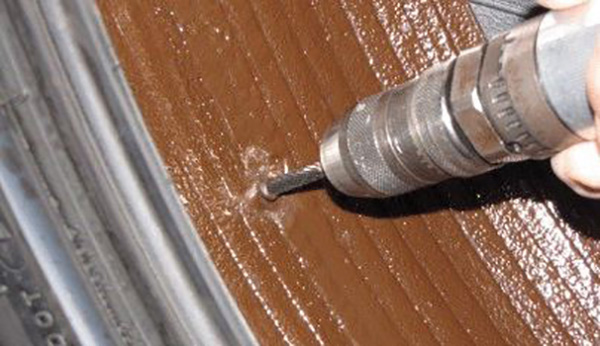 Fig. 6
Fig. 6
Next, spread the adhesive directly over the hole without brushing. (Fig. 7) Do not mix products from different repair material manufacturers.
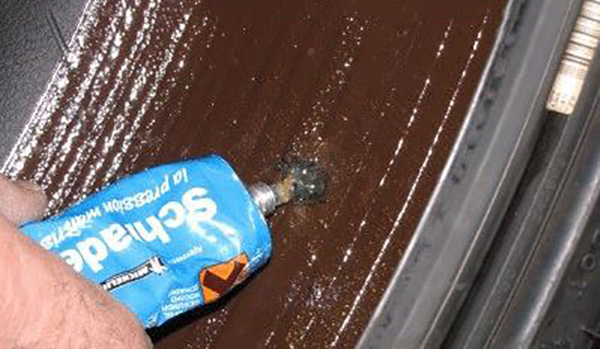 Fig. 7
Fig. 7
Once the adhesive has dried for five minutes, remove the protective covering from the one-piece stem (do not touch the uncovered surface) and insert the stem in the puncture from inside the tire. (Fig. 8) Pull the stem smoothly from outside the tire.
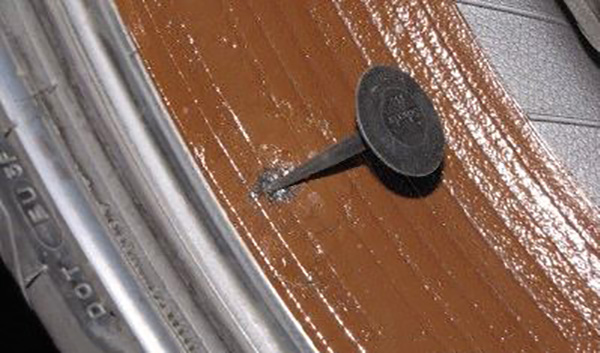 Fig. 8
Fig. 8
Roll over the base of the stem on the inside from the center of the stem to the edge. Cut the protruding part of the stem on the outside of the tire without pulling on the body of the stem. (Fig. 9)
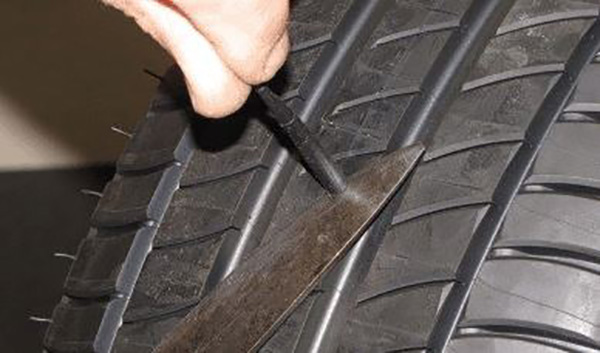 Fig. 9
Fig. 9
For additional information, refer to Bulletin #17-NA-299.
– Thanks to Charlie Mott and Dan Hrodey



















What are the part numbers for the:
1. one-piece patch/stem unit
2. adhesive compatible with the Michelin Selfseal material.